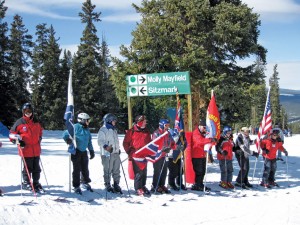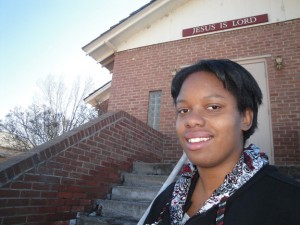John Mattingly
In 2008, George Mason University conducted a thorough, fine-grained survey of U.S. citizens to learn how much people actually knew about climate change. One of the more curious findings was that, when asked whom they believed to be the most reliable source of information about climate change, 66% of those responding gave the name of a television weather person. Al Gore barely got more votes than those who said there was no one they trusted on the topic.
Given the results of this survey, it isn’t surprising that on those frigid, cold days the television weather person can’t resist making comments like, “Well, it looks like global warming isn’t coming on as fast as those scientists think it is.” Or, “Wouldn’t it be nice if those scientists who think global warming is coming, would send a little more of it our way.”
Much of this animosity toward “those scientists” is a leftover from the W. Bush “war on science” that was waged against evolution, global warming, endangered species and protected lands. And, some of the animosity toward scientists may be the envy of television personalities who are acknowledged inferiors when it comes to a scientific pedigree.
The phenomenon of the media weather person started in the post-World War II explosion of televisions in U.S. homes. The weather people were usually from the military, where they had been trained in meteorology in the Navy or Army Air Corps. I recall seeing archival footage of Louis Allen, a moderately famous Washington D.C. weatherman of the early 1950s, who had an impossibly deep voice and talked about the forecasts he’d done for the invasion of Iwo Jima while telling viewers if it might rain tomorrow.
Then, as I recall, there was a period in the late 1950s and early ‘60s when media weather people became entertainers, everything from women in bikinis to various talking animals. The weather report became somewhat of a joke, and that seemed to reflect the inability of forecasters to provide reliable predictions. By the mid- to late 1970s, however, media weather people started to think of themselves a bit more seriously. Partly because new modeling technology from computers made their forecasts more accurate, and some TV stations began to have a weather person who had actually graduated with a degree in meteorology from a prominent university. By the 1980s, improvements in the filming and presentation of weather events on television became more sophisticated and thus engaging.
From the 1980s until recently, media weather folks were probably helpful communicators, and possibly the most scientific person the average U.S. person felt comfortable with. Mountains of viewer research indicate that the weather segment is the most popular of a given station’s news program, and many people select their news provider primarily on the basis of the weather person.
So maybe it isn’t so surprising that most U.S. citizens consider their media weather persons to be the most reliable source of information about climate change. The weather person is accessible, whereas “those scientists” talk in sophisticated but guarded terms, fearful of being sullied by contact with politics and the media.
Because weather and climate are different disciplines, relying on a weather forecaster to exposit on topics of climate is like going to a proctologist for a sore throat. A weather forecaster has an understandable tendency to doubt forecasts that reach out into years or decades, as is apparent from this remark, which I’ve heard from many media forecasters: “We can’t reliably predict the weather out for seven days, so how can those scientists predict the weather out twenty or fifty years?”
It’s as if the question of climate change is on trial, and all the deniers have to prove is reasonable doubt for the question to be declared a mistrial. But perhaps the real take-home message here is the data showing that a decent majority of U.S. citizens trust their television weather person. Climate scientists can either retreat in horror at the ignorance of the public, or take advantage of what is now a captive audience.
Let’s face it. Watching the weather on television is as American as mom and apple pie. As a farmer north of Fort Collins, and later in the San Luis Valley, I dutifully watched the weather report on the ten o’clock nightly news, even though the forecasts were for metro areas that were over a hundred miles from my farm and seldom relevant. I know many farmers and ranchers who routinely ridicule weather reports, yet do as I do: watch and listen to them religiously.
This is a curious dedication, and no less so than the fact that, as an industrial culture, we seem to have lost our observational skills in predicting the weather for ourselves. Particularly in the San Luis Valley, I found I could get a decent sense of coming weather by studying clouds, factoring in local lore and Old Wives’ Tales, and following the barometer on the shop wall. And, if the aches in my joints were severe, the storm that followed was usually a good one. But it’s easier, and somehow more comforting and convincing, to watch a forecast on a color screen.
Laziness may explain a lot of our lost abilities at local weather prediction, but a media weather person really doesn’t provide much more scientific information than a person can get from a thermometer, barometer, and hygrometer—the classic three-dial instrument panel available at WalMart for $9.99. How hard is it to look at the wall instead of a television?
For another hundred to a thousand dollars, you can get a nifty weather station that arguably surpasses the accuracy of media forecasts for your site-specific situation. I had a mid-range weather station, followed the data stream from it, but I still watched the television forecasts. The fact is, there’s something compelling, comforting, connecting, and even controlling, about watching the weather on television. However irrational or even ridiculous it may be, the television weather person is a solid fixture in U.S. culture, and if those who are motivated to bring about changes in our way of life that will impact climate change, it may be that the television weather person is the place to start.
Imagine a media segment adding a daily Climate Report after the Weather Report. Initially, the Climate Report would dedicate time to distinguishing the functions of climate from those of weather so that viewers would become conversant with the functions being reported in the Climate Report, and why and how they are necessarily different from the functions related to daily/weekly weather.
The Climate Report would expand over time to report on the global functions affecting climate, and show how these can influence local weather. If done right, viewers would become more and more interested in it, particularly if more climate chaos erupts around the world, which is the way many climatologists suggest global warming will (or already has) manifest itself. Models showing climate changes going out fifty years are actually fascinating to watch.
On the other hand, I understand the argument that even if we knew what to do about climate change, the solutions require expansive, coordinated efforts at a time when the world is extremely disinclined to engage them. Chances are pretty good that we’ll be watching a lot of extreme weather on television. But a TV Climate Report might a worthwhile place for “those scientists” to give us a better understanding of the variables.
John Mattingly cultivates prose, among other things, and was most recently seen near Creede.


